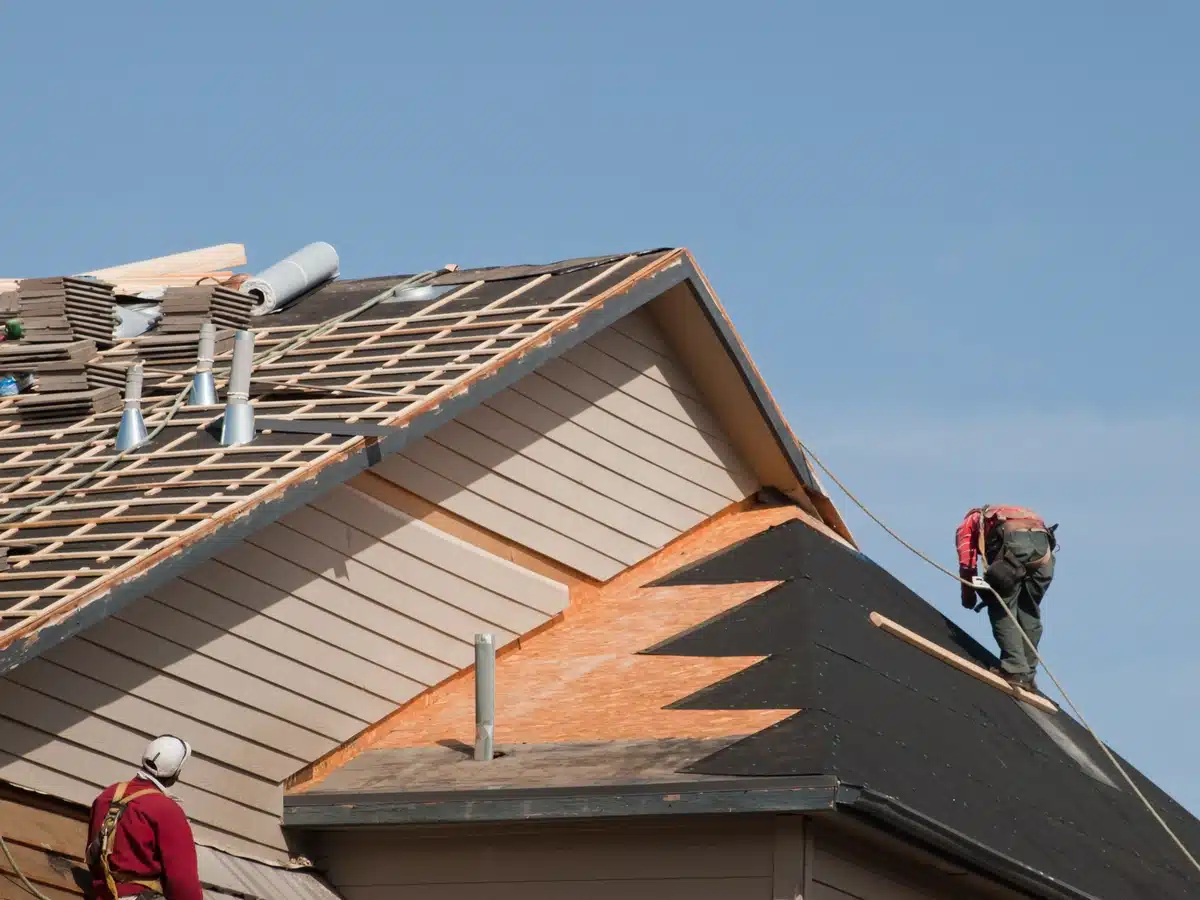diy roof replacement
THere are a few things that are inevitable when it comes to owning a home. It will be the place where you feel the most comfortable. There will always be yard work to do. And, eventually, you will need to replace your roof.
We can hear you groaning, and we understand. No one likes to think about roof replacements. The cost, the mess, and even finding a roofing contractor… it can all be overwhelming. It’s only natural to start thinking about trying to tackle it by yourself.
Table of Contents
A diy roof replacement can be a daunting task, but with the right knowledge, equipment, and careful planning, it’s possible to tackle this project on your own. Not only can a diy roof replacement save you money, but it also gives you the satisfaction of completing a major home improvement project. In this blog post, we’ll guide you through the process of:
- Replacing your roof
- Covering potential costs
- Essential equipment
- Risks involved

If you’re ready to learn if a diy roof replacement is the right choice for you, keep reading!
Pros and Cons of DIY Roof Replacements
When you see the expensive price tags associated with a professional roof replacement, it is only natural to wonder if you couldn’t just do it on your own. However, it is important to do research and understand the pros and cons of replacing your own roof vs. hiring a professional roofing company. Here are some of the factors to consider:
✅ Pros:
- Cost – For most people, the most obvious benefit of doing your own roof repairs and replacements is that you can save a lot of money. Labor costs add up, and not paying them is a great way to make your roofing project more affordable.
- Work on Your Schedule – If you are in urgent need of a new roof, it can be tricky to wait weeks and sometimes even months for a roofing company to fit you into their schedule. When you work for yourself, you can get to work on your diy roof replacement whenever you want!
❌ Cons:
- Safety – Roofing is inherently dangerous and comes with a serious risk of injury, especially if you aren’t used to being up on a roof. When in doubt, it is always best to hire a professional.
- No Specialty Materials – While certain roofing materials, such as asphalt shingles or cedar shakes, are relatively simple to install, other material types, such as metal, slate, or synthetic roofing, may require specialized installation and tools that the average homeowner simply doesn’t have.

8 Steps for a DIY Roof Replacement
Before you dive headfirst into the world of roof shingles and tools, it is important to do some research. Here are 8 steps you should follow for a quality diy roof replacement:
- Assessing the Scope of the Project
The first step in any diy roof replacement is to evaluate the condition of your existing roof. Identify signs of damage, such as:
- Missing shingles
- Leaks
- Sagging areas.
Take the time to assess the roof’s age, type, and slope to determine the complexity of the project. Simple roof replacements, like asphalt shingle roofs, are generally more manageable for DIYers.

- Obtaining Permits and Understanding Local Regulations
Before embarking on your diy roof replacement, check with your local authorities regarding necessary permits and regulations. Some areas may require permits or inspections ensuring compliance with building codes. Adhering to these regulations ensures your safety and the integrity of your home.
- Gathering the Equipment and Materials
To replace your roof, you’ll need a range of tools and materials. Here’s a list of the essential equipment for your diy roof replacement:
- Safety gear: Safety glasses, work gloves, a hard hat, and non-slip shoes.
- Ladders and Scaffolding: Sturdy extension ladders and scaffolding to safely access the roof.
- Roofing Tools: Hammer, utility knife, roofing nails, pry bar, chalk line, roofing shovel, and a roofing nail gun.
- Materials: New roofing materials (shingles, underlayment, flashing, and ventilation components), ice and water shield, and drip edge.
- Calculating the Costs
The cost of a diy roof replacement depends on various factors, such as the size of the roof, the materials chosen, and any additional repairs needed. On average, the cost for materials ranges from $2,000 to $10,000 for a standard asphalt shingle roof. However, keep in mind that these costs can vary significantly based on your location and specific requirements.
- Preparing the Work Area
Before you begin your diy roof replacement, ensure the work area is safe and clutter-free. Clear away any debris, tools, or obstacles that may impede your progress. Take necessary precautions to protect your landscaping and any fragile items around the house.
- Removing the Old Roof
Start by carefully removing the old shingles using a roofing shovel or pry bar. Dispose of the old materials responsibly, either by renting a dumpster or arranging for waste removal services. Inspect the underlying roof deck for any signs of damage and make repairs as necessary.
- Installing the New Roof
Once the roof is prepped, install the necessary underlayment, ice and water shield, and drip edge according to the manufacturer’s instructions. Begin installing the shingles from the bottom of the roof, working your way up in rows. Use a roofing nail gun for faster and more efficient installation. Proper ventilation and flashing installation are crucial to prevent future leaks during your diy roof replacement.
- Clean-Up and Final Touches
Once the shingles are in place, clean up any debris, and inspect the roof for loose nails or other potential hazards. Check for any visible defects, such as misaligned shingles, and make necessary adjustments. Finally, trim any excess materials and clean the gutters and downspouts to complete your diy roof replacement.
Risks and Safety Considerations
While a diy roof replacement can be a rewarding project, it’s essential to acknowledge the risks involved. Here are some safety tips to keep in mind:
- Always use appropriate safety gear, including a harness, if working on steep roofs.
- Never work on a wet or icy roof.
- Use caution when handling tools, especially when using nail guns or sharp objects.
- Be mindful of electrical hazards, such as overhead power lines.
- Work with a partner if possible, as they can provide assistance and ensure your safety.
Need Help? We’ve Got You Covered.
Feeling overwhelmed at the thought of replacing your entire roof on your own? You need a professional roofing contractor that you can trust! At Tectum Roofing, we have the experience to install your new roof efficiently and correctly so that it will last you for years to come.
Contact us today to learn more about the best alternatives to a diy roof replacement or to schedule a free inspection.
Contact us today to receive an estimate for your roofing project!



